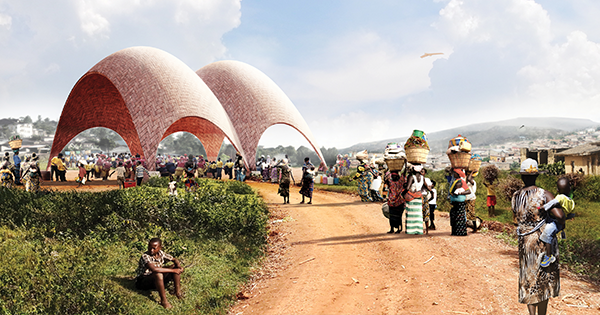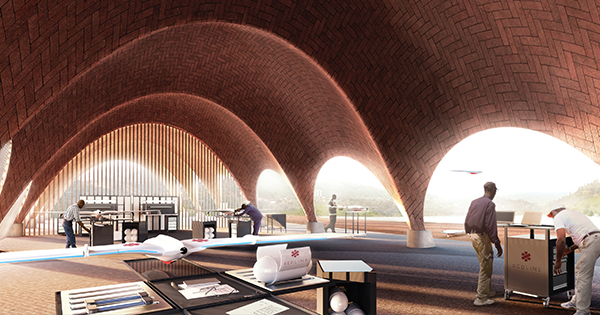Drone Zone
A new project in Rwanda hopes to revolutionize how we use drones—for good

This year the British architectural firm Foster + Partners, in collaboration with Switzerland-based Afrotech, will break ground on three “droneports” in Rwanda. These new hubs will allow drones to deliver medical, emergency, and commercial supplies to the vast inaccessible parts of the rural sub-Saharan region. The team plans to expand the project into the neighboring Republic of the Congo and other countries. Afrotech’s British director, Jonathan Ledgard, a former correspondent for The Economist, a novelist, and a pioneer in deploying technologies in Africa, explains the project.
How will the drone airports function?
The droneports will be multiple-use buildings with an area for drone landings, a digital fabrication shop for 3D printing of spare parts, a medical clinic, and a commercial area intended for courier companies and postal service. The commercial element is critical because there are many young people with smartphones and a lot of digital—but not much physical—connectivity who are desperate for access to e-commerce.
How fast and at what elevation will the drones travel?
They fly at speeds of 100 to 200 kilometers per hour, between 300 and 500 meters above ground—an altitude at which planes don’t fly. They’ll be, at that height, pretty noiseless and, at that speed, hard for anyone to shoot down.

Why did you choose Rwanda for this pilot program?
Rwanda’s president is one of the few African heads of state who really understand the potential for advanced technology. There is also very little corruption in Rwanda, so we feel it’s relatively easy to get parts and engineers in and out. We’ve looked at a specific site in Kibuye, on Lake Kivu—bordering Rwanda and Congo—where the government is happy to give us land.
What benefits do you anticipate the project will have?
It’s possible within a decade’s time to have 20 to 50 droneports, which will increase the transportation capacity by up to 10 percent. Cargo drones are a supplemental transportation system, adding to the rate of exchange of goods and services in addition to roads and rail. In some instances, for some precious goods, it will make sense to use a cheap flying robot to speed them along a network of droneports. This will allow for new types of business to emerge, such as local manufacturing and e-commerce.
Is the architectural design the same for all three droneports?
No, we can imagine it as something evolving. The concept is sound, but the details will only be discovered on the ground with local communities.

